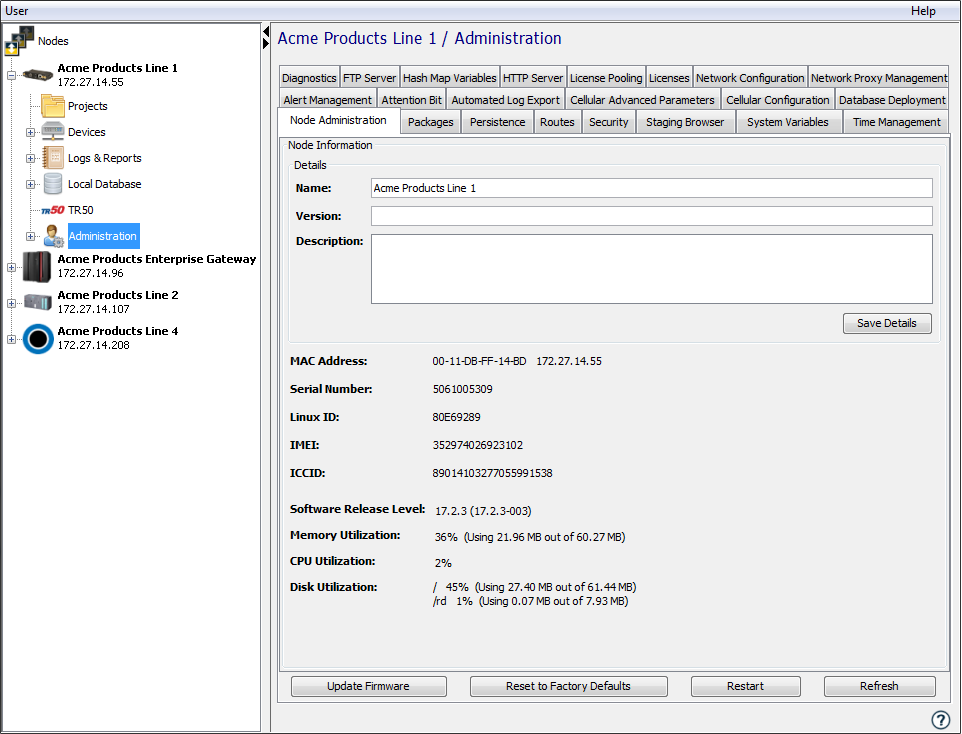The Node Administration tab is used to
perform general node administration tasks.
The parameters and labels may vary slightly depending on the product installed on the node. The Details section parameters are as follows:
| Parameter | Description |
|---|---|
| Name | The node name that will be listed in
the Nodes list in the left hand pane of
the Workbench. It will also be
displayed in the Node details window
when the node is selected from the
Nodes list. The node name can be any meaningful name to help identify the node. It can have up to 64 characters and include letters, numbers, and the underscore character. Spaces are allowed. The node name, Host name and TR50 thing key parameters are separate items. The node name will be New Node or New Gateway when a product is initially installed. |
| Version | The application version is a text parameter that can have any meaningful value, for example indicating the application version (different from the product version) that is on the node. |
| Description | A text parameter that can have any meaningful description of the node, its application or its function. It will also be displayed in the Node details window when the node is selected from the Nodes list. |
Click the Save Details button to save any
changes to the parameters.
The Node Information section displays information about
the node. The parameters and labels may vary slightly
depending on the product installed on the node.
The Node Information section parameters are as follows:
| Parameter | Description |
|---|---|
|
A unique hardware identifier. This
can be a(n):
This unique hardware identifier is used:
|
| Software Release Level | The product version number and build number. |
| Memory Utilization | The amount of memory used, displayed in a MByte value and a percentage. Depending on the product installed, the percentage may be the system's runtime use of the available memory when the runtime was started or the total use of all processes of the total operating system memory. For more information on the memory utilization, see Node Overview. |
| CPU Utilization | The percentage of CPU cycles being used. |
| Disk Utilization | The amount of disk space used, displayed in a MByte value and a percentage used of the total disk space. |
The values displayed for memory, CPU, and disk utilization give a general indication of a node's resource usage. This information is product and platform (operating system and hardware) specific, the parameters and values can be used during application development, verification and monitoring. The general rule is that the larger the application, in terms of projects, triggers, devices, transports, listeners, etc, then the greater the use of the node's resources. For more information, see Troubleshooting node resource utilization problems.
The Update Firmware button will display a file dialog window, prompting for the location of a product update (.DWU) file. This reference to firmware is for the gateway product only, and not for the operating system or hardware firmware. For more information, see Updating products.
Some products do not have a firmware update feature and rely on a complete product installation. For more information, see Installing product software.
The Restart button is used to restart the runtime components or, for some products, reboot the node's operating system.The Workbench will be temporarily disconnected from the node while it is restarting. Some products do not support a restart feature and the node must be manually powered off and then back on.